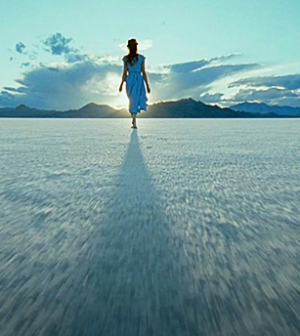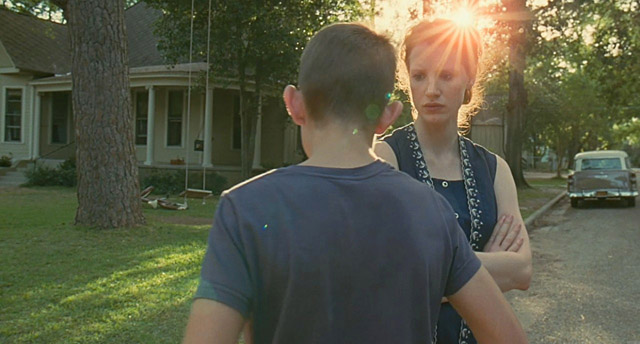 It all starts with a feeling, right? Inspiration, from the music you just heard. Anger, at the person who betrayed you. Joy, for the joke you just cracked. Sadness, for the relationship you’ve lost. Guilt, for not finishing the script on time. Emotions are the start and end point when creating any work of art, for whatever purpose. But screenwriting quite often gets boxed into formal, point-of-fact stage directions, and the emotion is left to the dialogue — the province of actors. So as a writer, how do you best balance and convey emotion in the words at your disposal? As a filmmaker, how do you translate and imbue emotions into a short, feature, experimental or documentary film — something visual and aural and engaging… where to begin?
It all starts with a feeling, right? Inspiration, from the music you just heard. Anger, at the person who betrayed you. Joy, for the joke you just cracked. Sadness, for the relationship you’ve lost. Guilt, for not finishing the script on time. Emotions are the start and end point when creating any work of art, for whatever purpose. But screenwriting quite often gets boxed into formal, point-of-fact stage directions, and the emotion is left to the dialogue — the province of actors. So as a writer, how do you best balance and convey emotion in the words at your disposal? As a filmmaker, how do you translate and imbue emotions into a short, feature, experimental or documentary film — something visual and aural and engaging… where to begin?
Expression. Getting that feeling out there, onto the page and screen. As writers we attempt to capture and/or evoke a particular emotion, or better yet, range of emotions. We are always feeling more than one thing at once, this is the nature of reality. The goal as a creator and filmmaker must be to make yourself, or your audience, feel an array of emotions through the words you choose to describe on a page and capture with a camera. A good exercise on the path to achieving this effect is to write visually. A screenwriter’s mantra is usually “actions speak louder than words.” Well, yes… but this isn’t necessarily what I’m talking about. Sometimes there is need (or desire) to go beyond the dialogue and the stage-action in order to truly write the visual you are imagining. It’s not always so easy as “show, don’t tell.” Sometimes you need to do both to properly express an emotion with words, to ignite a spark in the directorial mind. Sometimes you must go back to the prose — an exercise of hands-on storytelling.
 Scripts are a funny thing because they, in and of themselves, are not necessarily the end product to your vision. But if we focus on those situations where we can take the chance to be the producing force behind a particular project, it’s extremely beneficial when you and those on your team treat a script not as a stepping stone on the road to a finished film, but as an integral and related piece of work.
Scripts are a funny thing because they, in and of themselves, are not necessarily the end product to your vision. But if we focus on those situations where we can take the chance to be the producing force behind a particular project, it’s extremely beneficial when you and those on your team treat a script not as a stepping stone on the road to a finished film, but as an integral and related piece of work.
Let’s use a recent example that received a lot of attention this past year: Terrence Malick’s infamous THE TREE OF LIFE “script.” I put script in quotations because it is in fact more of a document of visuals, emotions, and subtexts than numbered scenes with carefully structured plot points.
Actress Jessica Chastain, on the experience of reading the script:
The way the script is written is that it was more about ideas than just “this has to happen.” I talk about this a lot, but the scene where I am dancing in the air was an accident, and that wasn’t written in the script. There are moments in the script that talk about the lightness and grace the mother has… I’m sure in the editing room, when going through the script and trying to find different examples of what he’s written, he’s able to place that as an example of her.
Many people have said that only Malick could get away with this style of screenplay, and that the unconventional nature of the document contributed to the long and difficult journey of finally getting the film into production and released. While this may be true in Hollywood, when it’s just you – the independent writer/director – sitting in front of your keyboard with the desire to create a short, holding a camera that is begging to shoot something, this unconventional type of writing can be a worthwhile exercise in both written and directorial storytelling. So why not try it? Screenwriters are always taught that the director, the DOP, the production designer, etc are responsible for the visuals of your script. But that’s only one purpose of screenwriting and only one type of filmmaking. Write a script which can serve as a guide and inspiration for your shots, and go out and capture shots which can reinforce and interpret the emotional ideas in your script. Each can co-exist and even enhance the other.
 Let’s look at a few examples from THE TREE OF LIFE. The first – an excerpt which describes a son’s perceptions of the grace of (and perhaps Malick’s owns feelings toward) Chastain’s character of the mother, Mrs. O’Brien:
Let’s look at a few examples from THE TREE OF LIFE. The first – an excerpt which describes a son’s perceptions of the grace of (and perhaps Malick’s owns feelings toward) Chastain’s character of the mother, Mrs. O’Brien:
BABY’S POVS – MOTHER’S SMILE, HANDS, ETC
His mother’s smile: the first thing he perceives. It covers him with light. She is goodness, peace, the fountain of life: hers is the very breath of paradise. Wordlessly, she speaks with his soul. He cannot tell where she leaves off and he begins. From the beginning she ignores her interests and convenience to serve his.
Or later in life (and the script):
Later, they watch from another room as she dances by herself to some music on the radio.
Jack remembers a dream he once had of his mother lying, like Snow White, in a glass coffin. Her beautiful red cheeks, her hair black as the night. How would he face the world without her? He cannot bear the thought that he might have a separate destiny.
A final except from the script, describing the mother’s grief over the loss of her son:
We are aboard a train, plunging through the countryside; the locomotive far ahead, barely visible. A blind, overwhelming force.
The rails weave in and out beneath the wheels. The steel lines of fate. It runs along its way, defies all other paths, all walls, crashes through every obstacle.
She cannot be persuaded to turn or look. She sits with her face averted, staring at the ground.
Each day she finds it harder to beat. She cannot read, or sleep. The dawn light coming in though the window is ghastly to her. It is as though he had died again. And yet she would not be surprised if he were to walk into the room.
Children play. Spring comes. The crocus raise their heads. The redbuds blaze. They return.
A door through which one fears to look. A path one shrinks from taking. Empty parks. A vast, neglected garden. A gate. The past consuming all.
She remembers when the sun shone about her, when it seemed that she would die in her nest.
Not only have numerous scenes and locations and characters come and gone within the prose, but there are only a few visual cues for the director to work from… some are very specific (dawn light coming through a window), others are extremely vague (a blind, overwhelming force). How exactly do you roll camera on the “unbearable thought that he might have a separate destiny” from his mother, or “the past consuming all?” Therein lies the challenge (and the fun)!
The way each of us perceives these phrases, these bits and pieces of emotion and expression of those emotions, is where we can begin to find our own visual voice. So next time you sit down to write something… don’t be afraid to get a little non-traditional in the prose. Write something that you, or some other director, has to ponder and construct visually. Something the DOP has to draw on his/her own emotions in order to represent. Express, and see where the visual leads you and your story.
